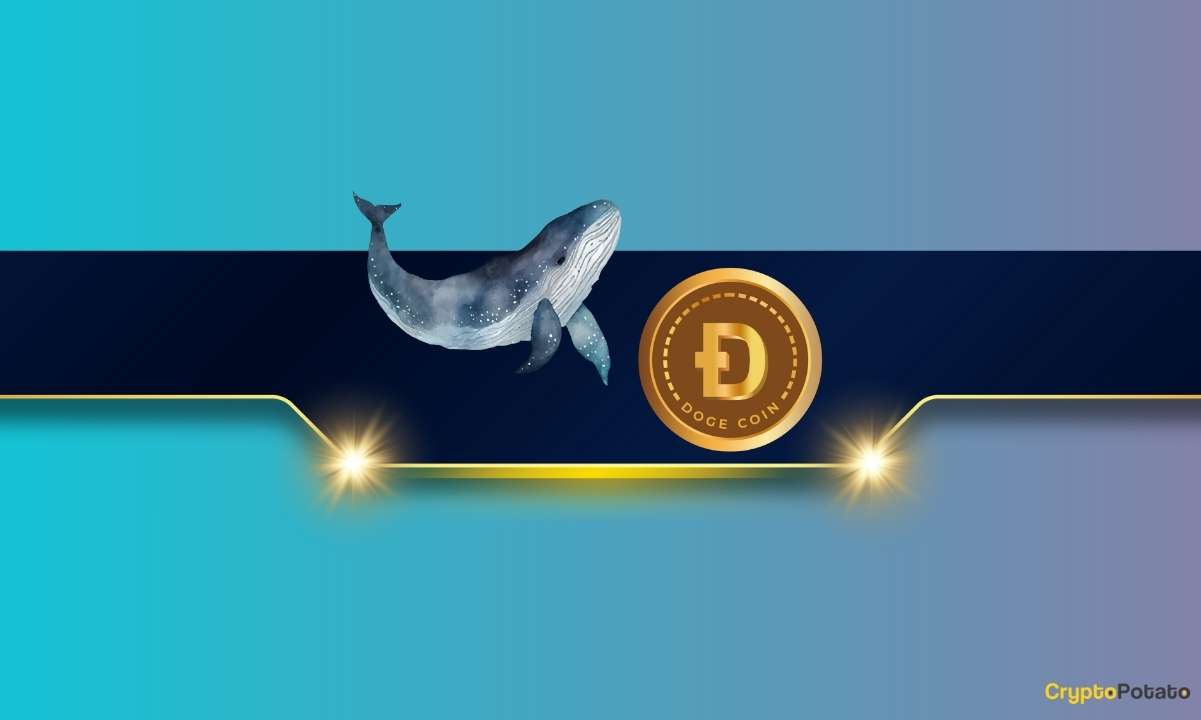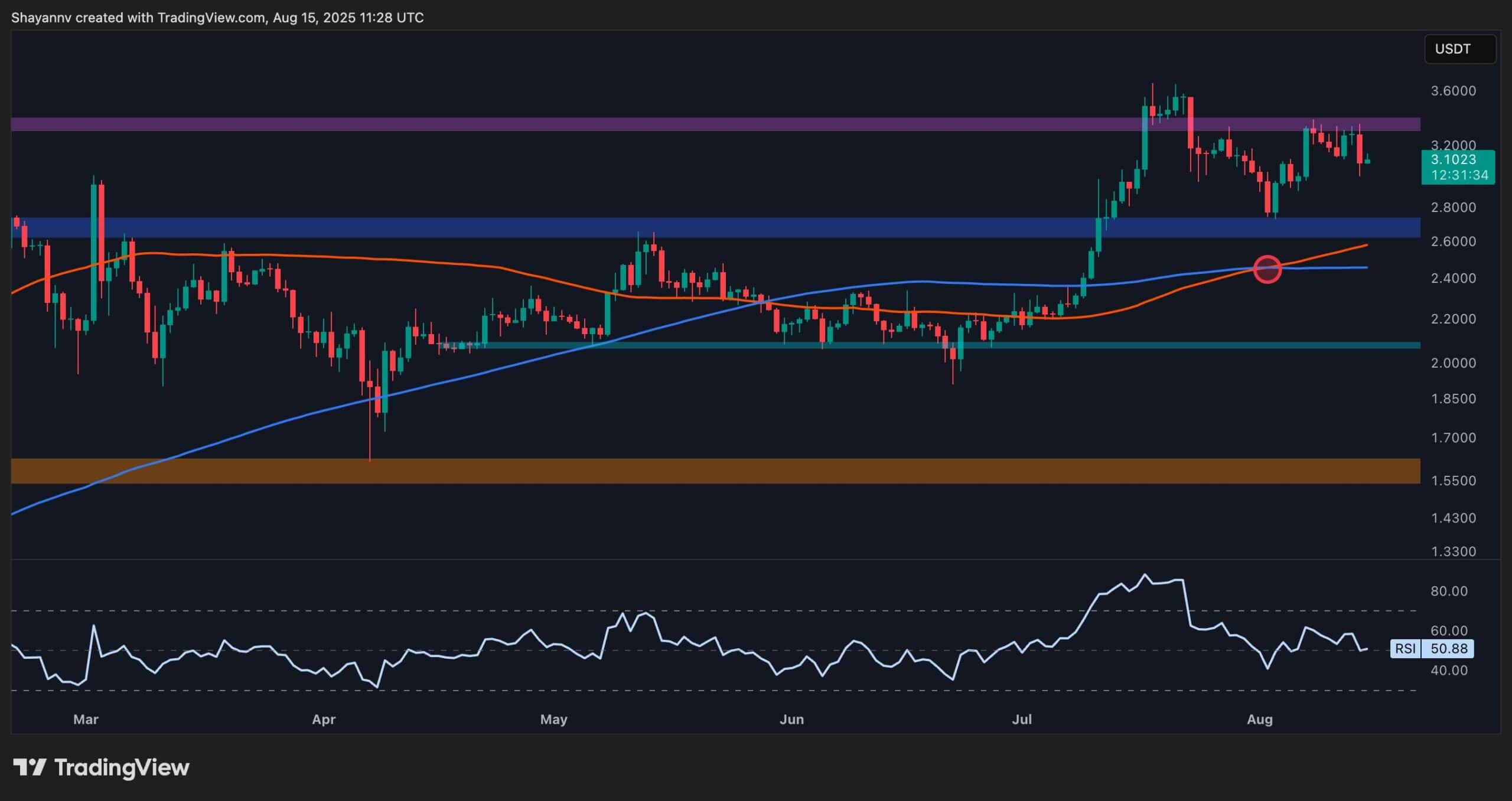Cryptocurrency
Ensuring integrity of blockchain transactions: Trust through audits

Blockchain auditing is the process of examining and verifying the data and transactions stored within a blockchain network. It focuses on assessing the integrity and accuracy of the information recorded on the blockchain to ensure it aligns with the intended rules, protocols and regulations.
Through the audit process, smart contract code is painstakingly examined to identify vulnerabilities of all levels, ranging from minor loopholes to critical weaknesses that could potentially expose millions to risk.
Auditors review and reveal centralization issues, ensure the project code functions as the developer intended, and optimize the code’s efficiency. They address key areas such as mathematical operations, logical issues, control flow, access control and compiler errors. By doing this, the probability of a smart contract vulnerability is substantially reduced, providing an essential safeguard in the world of Web3.
Sheldon Xia, founder and CEO of crypto exchange Bitmart, told Cointelegraph, “Auditing significantly reduces risks associated with smart contract vulnerabilities.”
However, auditing is not a panacea. Many projects often do not have their entire code audited due to time and budget constraints, leaving sections of the code unchecked and potentially susceptible to issues.
Furthermore, audits must be continuous, as code is frequently updated or forked, making single audits insufficient for long-term security.
In addition, there’s the challenge of ensuring that the deployed code is the one that was actually audited and not something different. This emphasizes the need for both transparency and traceability in the deployment process, underlining the necessity of a more holistic approach to security that goes beyond mere code auditing.

Auditing blockchain systems is crucial for several reasons.
Firstly, auditing ensures the verification of transactions recorded on the blockchain. This involves scrutinizing the transaction history, validating inputs and outputs, and confirming that the transactions comply with predefined rules and smart contracts. By doing so, auditing helps prevent fraudulent or erroneous transactions and maintains the integrity of the blockchain network.
Secondly, blockchain auditing plays a vital role in security and fraud detection. Auditors thoroughly review the transactions, and access controls and cryptographic mechanisms to identify unauthorized or suspicious activities within the blockchain network. This aspect is particularly critical in financial systems, supply chains and sensitive data management with high potential risks.
Auditing enhances accountability by holding participants responsible for their actions within the blockchain network. It helps identify discrepancies or inconsistencies, ensuring all stakeholders are accountable for their activities.
Furthermore, auditing instills trust and confidence among stakeholders in blockchain-based systems. By optimizing the blockchain network based on audit findings, organizations can ensure it can handle increasing transaction volumes and meet desired performance objectives.
The importance of reliable auditing processes
While auditors play an essential role in the security of blockchain networks, founders must select reputable organizations. One drawback associated with shady auditing firms is a conflict of interest. These entities may have undisclosed conflicts that compromise their independence and objectivity.
They could be financially tied to the projects they audit or maintain undisclosed partnerships or investments that introduce bias into their evaluations. Such conflicts undermine the integrity of the audit process and raise doubts about the impartiality of their findings.
Magazine: 6 Questions for Simon Davis of Mighty Bear Games
Transparency is crucial in auditing to ensure accountability and build trust. However, shady auditing firms often lack transparency in their operations. They provide limited or vague information about their methodologies, processes and auditors’ qualifications.
In March 2023, Cointelegraph reported that banks associated with the defunct crypto exchange FTX may have relied on the misleading and faulty financial information provided by proof-of-reserve examinations by auditors associated with the Public Company Accounting Oversight Board.
In another report by Cointelegraph in December 2022, the SEC’s acting chief accountant Paul Munter stressed that investors shouldn’t place too much confidence in a company’s proof-of-reserve audits. Munter said these proof-of-reserve reports lack sufficient information for stakeholders to determine whether the company has enough assets to meet its liabilities. This lack of transparency makes it challenging to evaluate the reliability and credibility of their findings, raising concerns about the validity of their audits.
Although a third party should conduct audits, the lack of true independence among many auditors means that the results are sometimes unreliable. In other words, they may have an incentive to avoid disappointing customers.
Inadequate due diligence is another drawback associated with shady auditing firms. Effective audits require thorough analysis, including a comprehensive review of project documentation, source code, financial records and security measures.
Some firms may perform inadequate due diligence or rely on incomplete or inaccurate information from their audit projects. Consequently, their reports can be misleading or inaccurate, failing to identify significant risks or vulnerabilities.
An incomplete or misleading audit can have severe consequences for the reputation and trustworthiness of a blockchain project. If investors, users or regulators discover an audit report is unreliable or conducted by an untrustworthy firm, it erodes confidence in the project.
This diminished trust can result in decreased adoption, loss of investments and potential legal repercussions.
Best practices for effective auditing in blockchain systems
In exploring best practices for conducting audits in blockchain environments, auditors must deeply understand how blockchain systems work. This includes knowledge of the underlying architecture, consensus mechanisms and transaction validation processes.
Such expertise enables auditors to identify potential vulnerabilities and evaluate the overall security and integrity of the system. Comprehensive documentation is essential to the auditing process, ensuring that all relevant information about the blockchain system is thoroughly recorded.
Technical specifications, smart contracts, cryptographic algorithms and other critical components must be documented to gain insights into the system’s functionality and identify potential risks and vulnerabilities.
Moreover, auditors should thoroughly review the codebase of the blockchain system and conduct a detailed analysis of smart contracts. This process entails assessing the code for vulnerabilities, logic flaws and potential attack vectors exploited by malicious actors.
Specialized tools and techniques may be employed to ensure the accuracy and security of the system during the code review and smart contract analysis.
End-to-end security is key
The reality is that auditing alone is not enough. A more holistic, comprehensive approach is required. While auditing addresses code-based risks, Know Your Customer procedures tackle the human risk factor, thereby providing a more comprehensive security overview. However, striking the right balance between the anonymity offered by Web3 and the trust fostered through KYC can be a delicate process.
Of course, KYC is not foolproof either, with cases of bad actors misrepresenting themselves and passing KYC checks, creating a false sense of trust around a project. This means that rigorous screening processes conducted by seasoned professionals are needed. KYC verification is only as meaningful as the process behind it is comprehensive.
Alpen Sheth, partner at Borderless Capital, a crypto venture capital firm, told Cointelegraph, “It’s important to remember that auditing should be an ongoing process to keep up with code changes and the evolution of the ecosystem. We acknowledge that security is an integral part of sustainable growth and development in the blockchain space.”
Chinese police vs. Web3, blockchain centralization continues: Asia Express
In this complex landscape, investors should also exercise due diligence. Alongside reading and understanding audit reports, they should also look for projects audited by reputable firms, track project code updates and their corresponding audits, know the team behind the project and their track record, and consider the proportion of audited code within the project.
As the Web3 ecosystem continues to grow, a multifaceted approach combining comprehensive auditing, robust KYC processes, and investor due diligence is necessary to ensure optimal security. This, alongside a concerted effort to address the challenges of centralization risks, can provide a more secure foundation for the continued growth and success of Web3 projects.
Cryptocurrency
Ethereum Foundation, Whales, and Hackers: What’s Driving the ETH Sell-Off?

TL;DR
- Whales, hackers, and the Ethereum Foundation wallets moved over $500M in ETH through large sales and withdrawals.
- Ethereum transfers rose to 4.6M ETH, nearing the monthly high of 5.2M recorded in July.
- Staking inflows hit 247,900 ETH, the highest in a month, locking more supply from trading.
Large Withdrawals and Whale Activity
Ethereum (ETH) has seen heavy movement from major wallets over the past few days. On-chain data from Lookonchain shows a newly created wallet pulled 17,591 ETH, worth $81.62 million, from Kraken in just two hours.
Over three days, two new wallets withdrew a combined 71,025 ETH, valued at $330 million, from the exchange.
One of these wallets, address 0x2A92, has withdrawn 53,434 ETH, worth $242.34 million, in two days. This includes a recent purchase of 30,069 ETH, valued at $138.46 million, during a market drop.
Major ETH Holders Offload Millions Amid Price Rally
In contrast, several separate entities have been disposing of some ETH holdings. A wallet tied to a hacker address 0x17E0 sold 4,958 ETH for $22.13 million at $4,463, securing a profit of $9.75 million. Earlier this year, the same address sold 12,282 ETH at $1,932 and later bought back part of the amount at higher prices.
A different whale sold 20,600 ETH for $96.55 million over the past two days, generating a profit of more than $26 million after holding the position for nine months.
Meanwhile, an Ethereum Foundation-linked wallet, 0xF39d, sold 6,194 ETH worth $28.36 million in the last three days at an average price of $4,578.
Recent sales from the same wallet included an additional 1,100 ETH and 1,695 ETH for over $12.7 million combined.
The #EthereumFoundation-linked wallet(0xF39d) sold another 1,300 $ETH($5.87M) at $4,518 ~11 hours ago.
Over the past 3 days, this wallet has sold a total of 6,194 $ETH($28.36M) at an average price of $4,578.https://t.co/4hfCWymHVG pic.twitter.com/ErUyEY8SJy
— Lookonchain (@lookonchain) August 15, 2025
Network Activity on the Rise
CryptoQuant data shows Ethereum’s total tokens transferred have been climbing since August 9. After ranging between 1 million and 3 million ETH through late July and early August, transfers have risen to 4.6 million ETH, approaching the monthly high of 5.2 million recorded in mid-July. This increase has occurred alongside a price rally from about $3,400 to $4,600.
Interestingly, staking inflows generally stayed between 20,000 and 80,000 ETH per day over the past month. On August 14, inflows jumped to 247,900 ETH, the highest in the period.
At the time, ETH was trading near $4,600. Large staking deposits reduce the amount of ETH available for immediate trading, as staked coins are locked for a set period.
In the meantime, ETH trades at $4,647 with a 24-hour volume of $68.25 billion, down 2% on the day but up 19% over the week.
Binance Free $600 (CryptoPotato Exclusive): Use this link to register a new account and receive $600 exclusive welcome offer on Binance (full details).
LIMITED OFFER for CryptoPotato readers at Bybit: Use this link to register and open a $500 FREE position on any coin!
Cryptocurrency
Massive DOGE Whale Activity Hints at $1 Breakout

TL;DR
- Whales bought two billion DOGE this week, lifting their combined holdings to 27.6 billion coins.
- A single 900M DOGE transfer worth $208M to Binance drew attention to large exchange movements.
- DOGE broke key resistance, with momentum building for a possible push toward the $1 price mark.
Price and Market Moves
Dogecoin (DOGE) traded at $0.23 at press time, slipping 4% over the past day but still showing a 2% gain for the week. Daily turnover came in at about $6.18 billion.
Meanwhile, the broader crypto market saw over $1 billion in liquidations. Hotter-than-expected US Producer Price Index data pushed traders to scale back expectations of a near-term Federal Reserve rate cut. DOGE had roughly 290,500 coins liquidated during the sell-off.
On the two-week chart, analyst Trader Tardigrade notes that DOGE has cleared a downward-sloping resistance line after completing what appears to be a “wave V” in an Elliott Wave sequence. Similar setups in the past, where prolonged declines stayed within falling channels before breaking higher, have been followed by sharp rallies.
$Doge/2-week#Dogecoin is gaining strong momentum to surge above $1 pic.twitter.com/TuSEKr19nv
— Trader Tardigrade (@TATrader_Alan) August 15, 2025
Momentum gauges are also turning up. The Stochastic RSI, which had dropped into oversold territory, is now heading higher. Previous reversals from this zone have coincided with sustained upward moves. The current formation points to a possible run that could carry DOGE past the $1 mark.
Heavy Whale Buying and Large Transfers
As reported by CryptoPotato, blockchain data shows large investors have added two billion DOGE in the past week, spending just under $500 million. That brings their holdings to about 27.6 billion coins, or 18% of the supply. The buying streak has prompted speculation within the community.
Recently, Whale Alert flagged a 900 million DOGE transfer worth about $208 million into Binance. The tracking indicates that it originated from a wallet connected to the exchange, likely as an internal activity. The address involved holds 2.88 billion DOGE, one of the largest balances on the network.
Ali Martinez also reports that transactions above $1 million reached a one-month high, with activity building since early August and peaking as DOGE traded at $0.25.
Whales are back! Dogecoin $DOGE activity at a 1-month high. pic.twitter.com/C83Pv68mCt
— Ali (@ali_charts) August 14, 2025
Sentiment Building
Analyst Gordon described the current setup as “a nice bit of consolidation” before a potential breakout, adding,
“This will be one of the first coins normies FLOCK to & the pump will be MASSIVE.”
With whale accumulation rising, high-value transfers increasing, and a bullish technical pattern in play, DOGE is positioned for a potential push toward $1 if momentum holds.
Binance Free $600 (CryptoPotato Exclusive): Use this link to register a new account and receive $600 exclusive welcome offer on Binance (full details).
LIMITED OFFER for CryptoPotato readers at Bybit: Use this link to register and open a $500 FREE position on any coin!
Cryptocurrency
Ripple Price Analysis: XRP at Risk as Key Support Levels Could Trigger Sharp Drop

XRP has recently entered a consolidation phase after a strong rally earlier this summer, with the price action now hovering around key resistance levels on both its USDT and BTC pairs. Yet, while momentum has slowed, the charts still indicate a generally bullish structure, with multiple key support levels remaining firmly in place.
Technical Analysis
By ShayanMarkets
The USDT Pair
On the XRP/USDT daily chart, the price is currently trading near the $3.10 mark, facing a strong resistance zone around $3.40. This follows a breakout above the $2.70 range in July, which has now flipped into a support area.
Both the 100-day and 200-day moving averages are also trending upward and recently formed a bullish crossover around $2.45, reinforcing the medium-term bullish sentiment. If the $3.40 resistance breaks, a push toward the critical $4.00 range becomes likely.
However, the RSI hovering near the neutral 50 level suggests a lack of strong momentum for now, meaning a short-term pullback into the $2.80 support zone is still possible.
This zone will be key for maintaining the bullish structure. Losing it could open the door for a deeper correction toward the 200-day moving average located around the $2.40 mark. Yet, as long as the price stays above the moving averages, the broader trend remains bullish.
The BTC Pair
Looking at the XRP/BTC chart, the pair has recently pulled back after hitting the 3,000 SAT resistance, with the price currently around 2,600 SAT.
This follows a clean breakout above the long-term descending channel and a successful retest of its upper boundary, which coincided with the 200-day moving average and the 2,400 SAT support zone. This confluence remains a key bullish technical factor, as holding above it could attract renewed buying pressure.
That said, RSI levels around 48 show that momentum has cooled after the sharp July rally, meaning XRP may continue ranging between 2,400 SAT and 3,000 SAT in the near term. A decisive close above 3,000 SAT would likely open the path to the 3,400 SAT zone, while losing 2,400 SAT could shift the bias back toward 2,000 SAT support. For now, the structure still favors the bulls as long as higher lows remain intact.
Binance Free $600 (CryptoPotato Exclusive): Use this link to register a new account and receive $600 exclusive welcome offer on Binance (full details).
LIMITED OFFER for CryptoPotato readers at Bybit: Use this link to register and open a $500 FREE position on any coin!
Disclaimer: Information found on CryptoPotato is those of writers quoted. It does not represent the opinions of CryptoPotato on whether to buy, sell, or hold any investments. You are advised to conduct your own research before making any investment decisions. Use provided information at your own risk. See Disclaimer for more information.
Cryptocurrency charts by TradingView.

 Forex3 years ago
Forex3 years agoForex Today: the dollar is gaining strength amid gloomy sentiment at the start of the Fed’s week

 Forex3 years ago
Forex3 years agoUnbiased review of Pocket Option broker

 Forex3 years ago
Forex3 years agoDollar to pound sterling exchange rate today: Pound plummeted to its lowest since 1985

 Forex3 years ago
Forex3 years agoHow is the Australian dollar doing today?

 Cryptocurrency3 years ago
Cryptocurrency3 years agoWhat happened in the crypto market – current events today

 World3 years ago
World3 years agoWhy are modern video games an art form?

 Commodities3 years ago
Commodities3 years agoCopper continues to fall in price on expectations of lower demand in China

 Economy3 years ago
Economy3 years agoCrude oil tankers double in price due to EU anti-Russian sanctions





















